
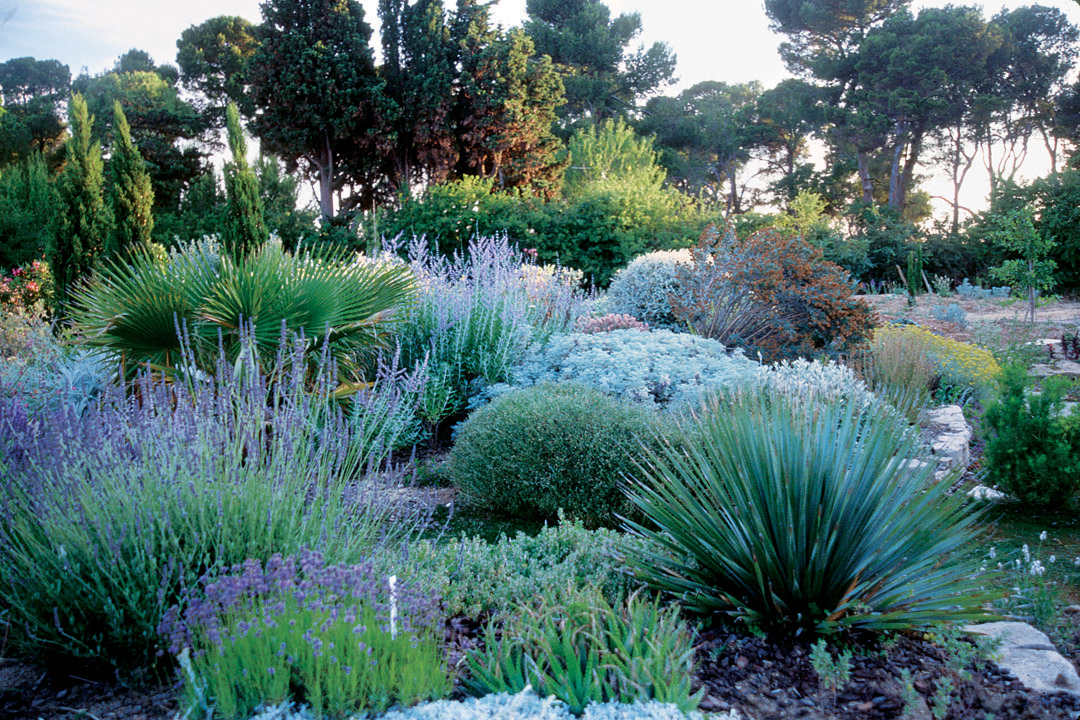
Contributor
- Topics: Archive
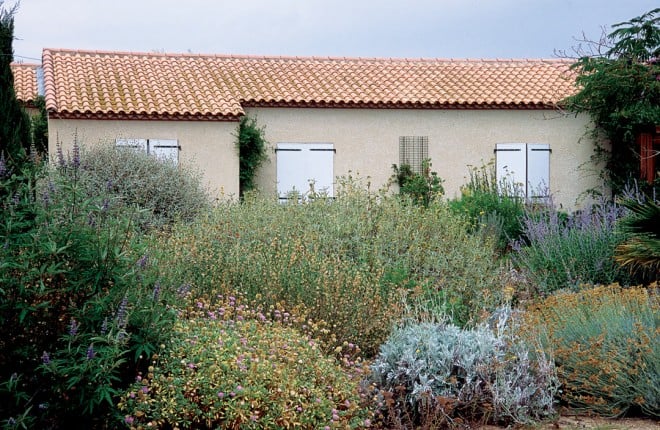
A lingering tension has filled our garden for thirty years. While I attempt to keep it personal and intimate, my nurseryman husband works to make it a professional resource, demonstrating a varied and reliable plant palette for colleagues and customers. Occasionally, strained discussions ensue on the siting of, or removal of, particular plants. While traveling on business, we always accumulate plants from nurseries and botanic gardens until our car is filled to the brim. On the journey home, Dave and I negotiate, and sometimes banter, over the best placement of the new acquisitions.
On a visit to the Desert Botanic Garden in Phoenix, I purchased a plant of Euphorbia resinifera, an abstractly conical succulent with smooth stem surfaces. It vaguely reminded me of a desert Christmas tree, and I imagined it on my patio draped with miniature white lights for the holidays. In the gift shop, I came upon a book entitled The Dry Garden Handbook, in which I found striking photographs of the plant I had just purchased, cascading down rocky slopes in the Atlas Mountains of Morocco. I was pleasantly surprised to discover that the book’s author was Olivier Filippi, a friend and fellow nurseryman.
Dave first met Olivier in 1996 in southern France. He traveled there to see Olivier’s home and nursery, and to observe plants of the Mediterranean Basin in their native habitat; we grow a number of those plants in our nursery in Arroyo Grande, on California’s Central Coast. Dave returned greatly influenced by what he had seen. He viewed our own garden from a new perspective, and he changed his approach to teaching and public presentations. I was so taken by this metamorphosis that I joined him on a return visit to Olivier’s two years later. That trip became a pivotal point from which we began to seriously re-evaluate our garden.
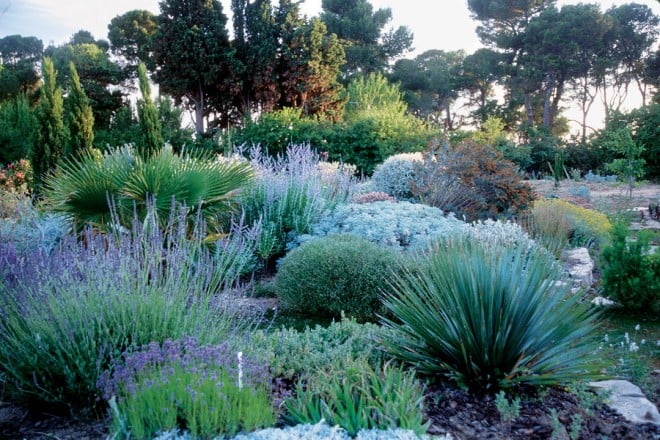
A Garden in Southern France
The Mediterranean coast of France receives, on average, an annual rainfall approaching forty inches—almost double that of California’s central coast, where we live. Both locales are characterized by the long dry summers common to mediterranean climates. Olivier’s garden, however, experiences hotter temperatures in summer and colder temperatures in winter. We arrived there in July, on a day that was warm and sunny. My first impression was that California’s chaparral and southern France’s garrigue share a visual simplicity of gently rounded plant forms, in addition to a resinous scent that fills the air.
Get inspiring stories like this one delivered straight to your inbox. Subscribe Now
As we approached Olivier’s home, I could see the close proximity of residence and garden to his nursery, all perched on a bluff overlooking the sea. I walked the neatly arranged nursery aisles and entered the garden, where gravel paths meandered among collections of spurge (Euphorbia), rockrose (Cistus), yarrow (Achillea), and lavender cotton (Santolina). A combination of lavender (Lavandula), California fuchsia (Zauschneria or Epilobium), and sagebrush (Artemisia) led to a stand of dormant Jerusalem sage (Phlomis) at the bluff’s edge, overlooking the oyster beds in the sea below. Olivier’s wife Clara explained a basic tenet of the garden: upon installation in the ground (in autumn), each plant is saturated with water once; the only subsequent irrigation comes from the natural rainfall. I voiced my concerns about losing plants to drought stress, but Olivier replied simply, “they either live or they die. They’re on their own.” Dave and I shuddered.
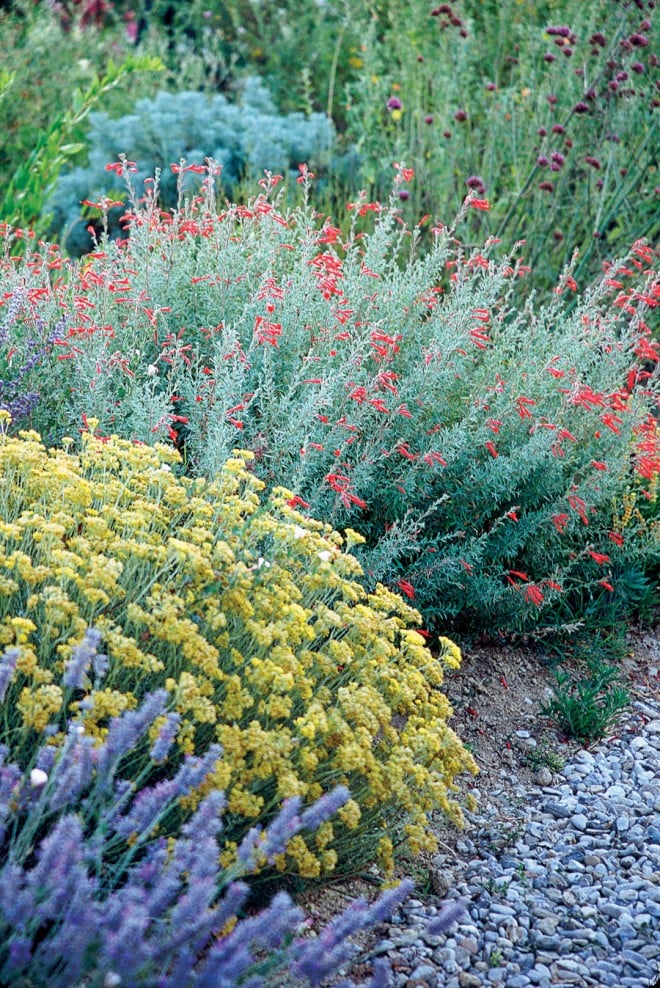
After a delightful midday meal of fresh shellfish, bread, cheeses, and wine, we joined in preparations to protect plants from the Mistral, a hot desiccating wind predicted for that afternoon. We covered blocks of the younger nursery stock with light-weight, mobile, tent-like frames, secured to the ground with stakes, and closed the shutters on the home’s windows and doors. We relaxed inside cool, dimly lit rooms until the hot wind subsided. The afternoon was reminiscent of days on which we experience Santa Ana winds in Southern California, typically in late summer or early fall.
As we drove back to our hotel that evening, we were quietly thoughtful at first; then a dialogue began.
“I think I’m smitten by that garden,” Dave said softly.
“What do you mean?” I responded.
“It’s so grounded in place. I’ve never seen an obsession with plant collections expressed so gracefully.”
“I was fascinated with their cultural practices, like making basins around each plant and making certain the root ball was saturated with water. What most impressed me was the watering . . . or the lack thereof.”
“Olivier is fully embracing the mediterranean climate.”
“You know . . . for some time I’ve wanted to allow our garden to go dormant in summer.”
A penetrating silence ensued. I wondered if he had even heard me. Just as I was about to ask, he said, “I’m not sure I’m capable of . . . not watering our garden. It’s a kind of tough love, and I’m not sure I’m tough enough.”
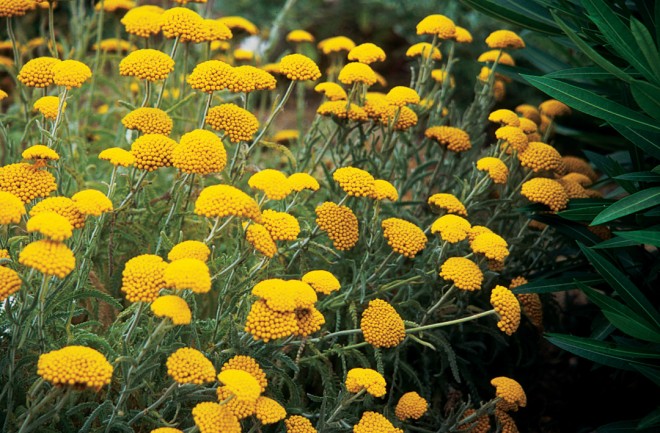
Both of us are comforted by the sight of summer dormancy in the wild, even to the point of arranging long drives in the local mountains just to view the golden California landscape during the dry months.
We had, in fact, managed to implement the concept of summer dormancy in a few parts of our garden. A large bed dedicated to species from the Channel Islands had not been watered for years; Catalina perfume (Ribes viburnifolium), ironwood (Lyonothamnus floribundus), and manzanita (Arctostaphylos insularis) always look green and vigorous with no supplemental irrigation. At the edge of that bed, hummingbird sage (Salvia spathacea) actually shunned watering, by developing powdery mildew in response to summer irrigation. Once we surrendered to its dormancy, the sage began to spread and now occupies a larger portion of the garden. Its foliage turns brown as the dry season progresses, but bright green leaves unfold with the first rains of autumn.
We began our garden thirty-one years ago when the notion of “xeriscape” was just becoming fashionable. The idea suited my demeanor: an informal, drought-tolerant garden matched my “sporadic” (on-and-off) gardening style. I can easily spend several days on a garden project, throwing myself at a new border with rake, shovel, and hose, after which I retreat into the house, like a turtle into her shell. I’m content to leave the care and maintenance to Dave. My horticultural education has come through trial and error, with his academic counsel along the way, but I have increasingly felt that the “cultivated” California landscape looked out of place—too much like the verdant lawns of my Midwestern roots.
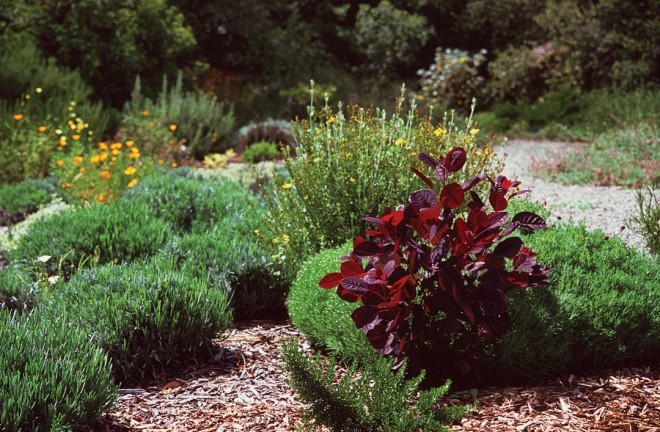
Upon returning from Olivier’s, we initiated a series of strategic and tactical changes in our garden that continue to this day. We expanded a succulent collection and added a number of new Mediterranean species and cultivars to existing beds of California natives. A billowing Rosmarinus officinalis ‘Boule’, grown from a cutting brought from Olivier’s nursery, is still the focal point outside our front window. Cotinus coggygria ‘Grace’ has become a favorite tree, offering bold purple leaves in summer, soft pink flower puffs in spring, and an elegant winter silhouette. Dave convinced me that one cultivar was not enough, so now our garden features four.
Last February, I read Emily Green’s article in the Los Angeles Times about dry gardens, entitled “It’s a Desert Even When It’s Raining.” The piece reminded readers that approximately half of Los Angeles’s water is utilized out-of-doors. Emily suggested reducing California’s need to import water by using native plants and others adapted to our long dry summers. Similar articles—many from Pacific Horticulture—have found their way to our coffee table, each prompting a discussion. Our garden is a continuing source of joy, debate, compromise—and fundamental disagreements.
Our dialogue on whether to water or to fully embrace summer dormancy continues. We received sixteen and a half inches of rain last February, part of a generous winter rainfall. By spring, the California hills were green, and the reservoirs had risen to near normal; the idea of going without summer irrigation was less unsettling. Perhaps this year, I hoped, Dave would forego using the irrigation system. Our respective garden desires reflect our internal conflicts—whether we have six inches or thirty-six inches of rain in a season.
In another decade, I wonder if we will all be living and gardening totally at the mercy of annual rainfall anomalies. Until then, I will continue to advocate that we forego watering our garden in summer . . . just like Olivier.
Pacific Horticulture is dedicated to horticultural excellence and providing a broader understanding of plants and humanity’s deep connection to nature. We are committed to delivering this information for free, supported by donations from our community. DONATE
Share:
Social Media
Garden Futurist Podcast
Most Popular
Videos
Topics
Related Posts

Ground Up Science for Greener Cities with Garden Futurist Dr. Alessandro Ossola
Spring 2023 Listen to the Podcast here. Alessandro Ossola is a scientist who gets very excited about the challenge of climate change allowing for an

Readying Urban Forests for Climate Realities with Garden Futurist Dr. Greg McPherson
Winter 2023 Listen to the Podcast here. “Going from the mow and blow to a more horticulturally knowledgeable approach to maintaining the landscape. And that

Low Maintenance Gardens – Better for Pollinators and People
Autumn 2022 “I come out every day. It’s therapy, my meditation.” Janet’s young garden transformed from overgrown, invasive plants to mostly natives. The dailiness of

Invasive Plants Are Still Being Sold: Preventing Noxious Weeds in Your Landscape
Autumn 2022 With so many beautiful ornamental plant species and cultivars throughout California and the Pacific Northwest, how do you decide which ones to include









Responses